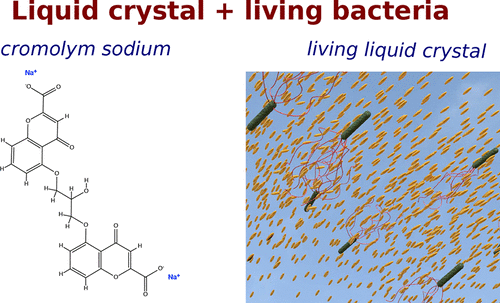当前位置:
X-MOL 学术
›
Acc. Chem. Res.
›
论文详情
Our official English website, www.x-mol.net, welcomes your feedback! (Note: you will need to create a separate account there.)
Harnessing Medium Anisotropy To Control Active Matter
Accounts of Chemical Research ( IF 18.3 ) Pub Date : 2018-10-31 00:00:00 , DOI: 10.1021/acs.accounts.8b00300 Igor S. Aranson 1
Accounts of Chemical Research ( IF 18.3 ) Pub Date : 2018-10-31 00:00:00 , DOI: 10.1021/acs.accounts.8b00300 Igor S. Aranson 1
Affiliation

|
Active matter is a wide class of nonequilibrium systems consisting of interacting self-propelled agents transducing the energy stored in the environment into mechanical motion. Numerous examples range from microscopic cytoskeletal filaments and swimming organisms (bacteria and unicellular algae), synthetic catalytic nanomotors, colloidal self-propelled Janus particles, to macroscopic bird flocks, fish schools, and even human crowds. Active matter demonstrates a remarkable tendency toward self-organization and development of collective states with the long-range spatial order. Furthermore, active materials exhibit properties that are not present in traditional materials like plastics or ceramics: self-repair, shape change, and adaptation.
中文翻译:

利用介质各向异性控制活性物质
活性物质是一类广泛的非平衡系统,由相互作用的自我推动的物质组成,这些物质将储存在环境中的能量转换为机械运动。例子很多,包括微观的细胞骨架细丝和游泳生物(细菌和单细胞藻类),合成的催化纳米马达,胶体自推进的Janus颗粒,宏观的鸟群,鱼群,甚至人群。活跃的事物表现出一种显着的自我组织和集体状态发展的趋势,这种状态具有长期的空间顺序。此外,活性材料还具有塑料或陶瓷等传统材料所不具备的性能:自我修复,形状变化和适应性。
更新日期:2018-10-31
中文翻译:

利用介质各向异性控制活性物质
活性物质是一类广泛的非平衡系统,由相互作用的自我推动的物质组成,这些物质将储存在环境中的能量转换为机械运动。例子很多,包括微观的细胞骨架细丝和游泳生物(细菌和单细胞藻类),合成的催化纳米马达,胶体自推进的Janus颗粒,宏观的鸟群,鱼群,甚至人群。活跃的事物表现出一种显着的自我组织和集体状态发展的趋势,这种状态具有长期的空间顺序。此外,活性材料还具有塑料或陶瓷等传统材料所不具备的性能:自我修复,形状变化和适应性。



























 京公网安备 11010802027423号
京公网安备 11010802027423号